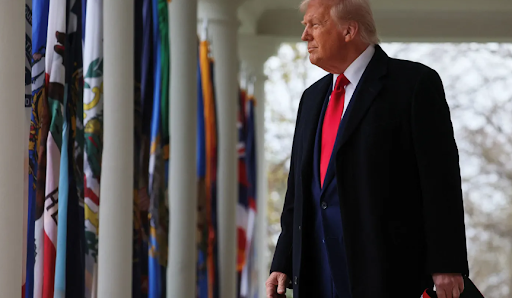The Trump Tariffs: A Comprehensive Analysis
Donald Trump's presidency was marked by a significant shift in U.S. trade policy, primarily through the imposition of tariffs on a wide range of goods. These tariffs, often justified under national security or economic grounds, had profound effects on both the domestic and global economies. This article delves into the details of these tariffs, their impacts, and the broader implications for international trade.
The Rationale Behind the Tariffs
Trump's administration argued that tariffs were necessary to:
Protect American Industries: Tariffs would shield domestic manufacturers from unfair competition from countries with lower labor costs or lax environmental regulations.
National Security: Certain tariffs, particularly on steel and aluminum, were justified as essential for maintaining domestic production capabilities critical for national defense.
Reduce Trade Deficits: By making imports more expensive, tariffs aimed to decrease the trade deficit, encouraging consumers to buy American-made products.
Negotiating Leverage: Tariffs were used as a tool to pressure other countries into trade negotiations, seeking more favorable terms for the U.S.
Key Tariffs Implemented
Steel and Aluminum Tariffs: In March 2018, the U.S. imposed tariffs of 25% on steel and 10% on aluminum imports under Section 232 of the Trade Expansion Act of 1962. These tariffs affected countries worldwide, including key allies like Canada, Mexico, and the European Union.
Data Point: The tariffs covered approximately $48 billion in steel imports and $16 billion in aluminum imports in 2017.
China Tariffs: Starting in 2018, the U.S. imposed tariffs on billions of dollars' worth of Chinese goods, citing intellectual property theft and unfair trade practices. These tariffs were implemented in several phases.
Phase 1 (July 2018): 25% tariff on $34 billion of Chinese goods, including machinery, electronics, and high-tech items.
Phase 2 (August 2018): 25% tariff on an additional $16 billion of Chinese goods, including chemicals and plastics.
Phase 3 (September 2018): 10% tariff on $200 billion of Chinese goods, later raised to 25% in May 2019. This included a wide range of consumer goods, such as clothing, furniture, and electronics.
Phase 4 (September 2019): 15% tariff on approximately $110 billion of remaining Chinese imports, including footwear, apparel, and other consumer goods.
Data Point: By the end of 2019, the average tariff rate on Chinese imports was 21.2%, compared to 3.1% before the trade war.
Other Tariffs:
Washing Machines (January 2018): Tariffs on imported washing machines, primarily targeting South Korea.
Solar Panels (January 2018): Tariffs on imported solar panels, mainly affecting China.
Data Point: These tariffs aimed to protect U.S. manufacturers like Whirlpool and First Solar.
Economic Impacts
The Trump tariffs had several notable economic effects:
Increased Costs for Consumers and Businesses: Tariffs increased the cost of imported goods, leading to higher prices for consumers and increased input costs for businesses that relied on imported materials.
Data Point: Studies estimated that the tariffs cost U.S. consumers billions of dollars annually.
Retaliatory Tariffs: Many countries retaliated with their own tariffs on U.S. goods, harming American exporters and farmers.
Example: China imposed tariffs on U.S. agricultural products, such as soybeans, pork, and cotton.
Data Point: U.S. agricultural exports to China declined significantly during the trade war.
Disruptions to Supply Chains: Tariffs disrupted global supply chains, forcing companies to find alternative sources for materials or relocate production.
Example: Some companies moved production from China to other countries in Southeast Asia to avoid tariffs.
Mixed Impact on U.S. Manufacturing: While some domestic industries benefited from reduced competition, others faced higher costs and reduced export opportunities due to retaliatory measures.
Data Point: While steel production increased, downstream industries that used steel faced higher costs.
Trade Wars and Uncertainty: The tariffs contributed to trade wars and increased economic uncertainty, which dampened investment and economic growth.
Winners and Losers
Winners:
Some U.S. steel and aluminum producers: Benefited from reduced competition and increased domestic demand.
Certain domestic manufacturers protected from foreign competition: Gained market share.
Losers:
U.S. consumers: Faced higher prices for goods.
Businesses relying on imported materials: Experienced increased costs.
Farmers and exporters hit by retaliatory tariffs: Suffered from reduced export opportunities.
Global economy due to trade disruptions: Faced increased uncertainty and reduced growth.
Long-Term Implications
The Trump tariffs have reshaped the landscape of international trade, leading to:
Rethinking Supply Chains: Companies are re-evaluating their supply chains to reduce reliance on single countries and mitigate tariff risks.
Trade Diversification: Countries are seeking new trade partners to reduce dependence on the U.S. and China.
Increased Trade Tensions: The tariffs have strained relationships with key trading partners, leading to ongoing trade disputes.
Debate on Trade Policy: The experience with the Trump tariffs has fueled a debate on the optimal approach to trade policy, balancing protectionism with free trade.
The tariffs introduced during the Trump administration represented a significant departure from decades of U.S. trade policy. While intended to protect American industries and reduce trade deficits, they also led to increased costs, retaliatory measures, and global trade disruptions. The long-term implications of these tariffs continue to unfold as businesses and countries adapt to the new trade environment.

